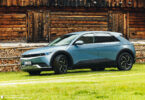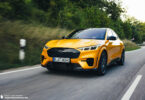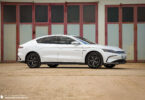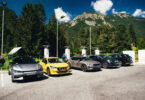KIA have been reinventing themselves since the beginning of 2021 with a fresh new logo, look, and confident design language. The new KIA EV6 is the flagship model of this makeover. But the EV6 doesn’t just aim to set the bar regarding looks, boasting charging times of a Porsche Taycan, prices of a VW Passat, and a host of smart features. We put the KIA EV6 GT-Line to the test to see how it performs.
You can find all electric Cars in our big EV special “Which is the best electric car of 2023?“, where you can also check out our personal EV buyer’s guide – free of charge!
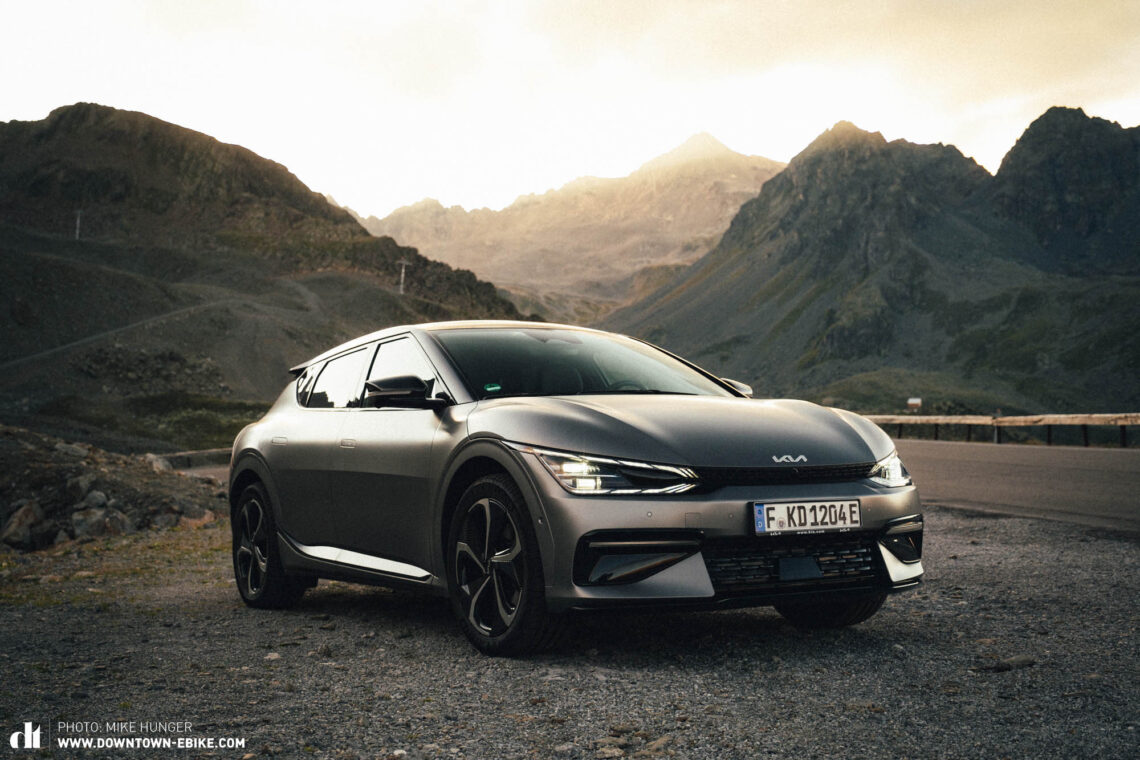
KIA’s purely electric crossover SUV is reminiscent of an A-wing Starfighter with its sharp edges and futuristic-looking headlights, turning many heads in city traffic. The matte grey of our test vehicle further underlines this appearance. It’s a far cry from the staid look of the majority of KIA’s previous generation models. The basic version of the e-SUV costs from € 46,990 and puts out 125 kW at the rear wheels. For our review, we tested the all-wheel drive option with a 77 kWh battery, producing 239 kW. In this configuration, the KIA EV6 is available from € 54,890, with the model on test going for a whopping € 64,980. According to WLTP, it offers an impressive 506 km range. We didn’t hesitate to put this claim to the test, heading out of the beautiful Stuttgart straight for the Alps with our e-road bike in tow, to see
how the EV6 fares on long trips and how much fun it is to drive on mountain passes. Let’s go!

The Electric-Global Modular Platform E-GMP – For quick charging and a spacious interior
KIA belong to the Hyundai Motor Group, which developed the new E-GMP platform, which provides the basis for three different models from the Hyundai group: the square-edged Hyundai IONIQ 5, which looks like an SUV that’s come straight out of Minecraft; the elegant GV60 of Hyundai’s premium sister brand Genesis, almost reminding us of current Bentleys; and, finally, the KIA EV6 GT-Line on test. The purely electric platform is claimed to provide a better interior layout and good handling thanks to the low centre of gravity.
The E-GMP platform forms the basis of three electric vehicles that couldn’t look less alike.
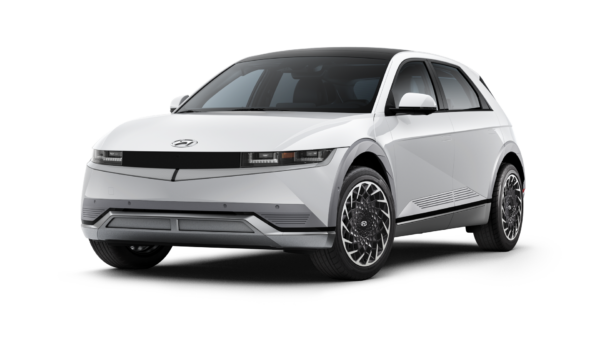
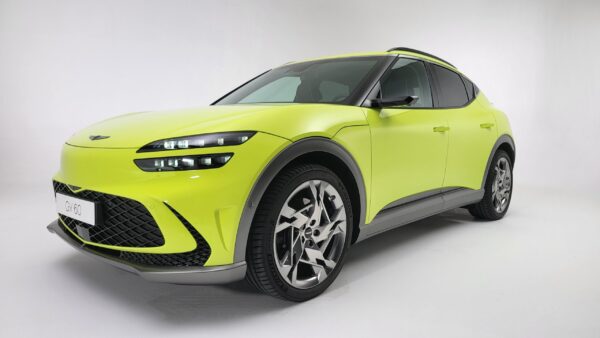

A KIA with character – The futuristic design of the EV6 GT-Line
The new KIA EV6 makes a modern and sporty impression. This is down to the organic, flowing lines, and sharp edges. Like a typical SUV, the EV sits higher off the ground, which carries over to the position of the seats. However, that doesn’t apply to the height of the roof. As such, the section from the top of the grille to the top of the roof looks flattened in comparison to the rest of the KIA’s proportions. You’ll notice this in the interior, too, which seems spacious in its width but not in its height. In the front seats of our test vehicle featuring the optional sunroof, we could have used a little more headroom. The further you move the seat forward, the more the headroom gets cramped. Even our shorter test drivers had trouble when wearing a cap. Besides that, you can easily hit your head against the roof when driving fast on bumpy roads – both our shorter test drivers of around 175 cm and taller drivers of about 190 cm experienced this first hand. By moving the seat further back you get more headroom.
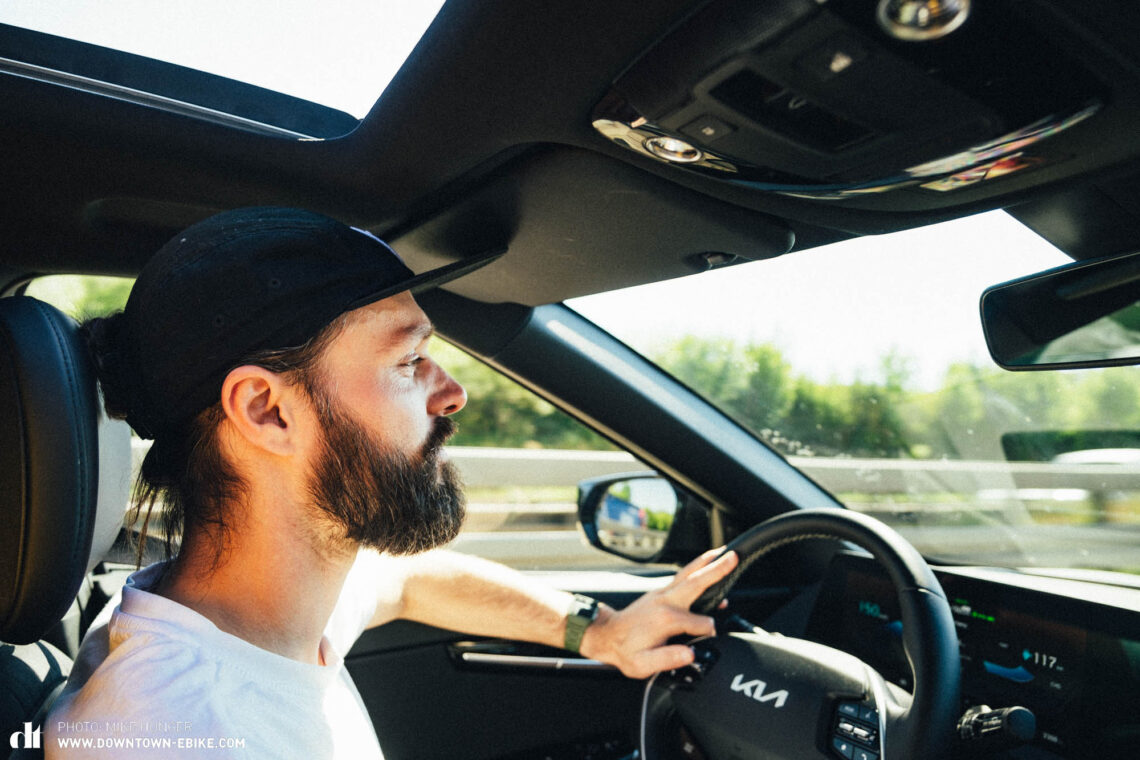
When you unlock the KIA manually, the light strip at the rear flashes with its diamond-patterned indicators, and the door handles come out of the recesses in the doors. The one-piece light strip, functioning as the reverse and brake light, is positioned along the sharp edge of the rear spoiler. Together with the two-piece spoiler above the rear window, it contributes to the EV’s aerodynamic CW value of 0.28, which is good for an SUV, allowing the EV6 to glide along efficiently on the highway while also looking futuristic.

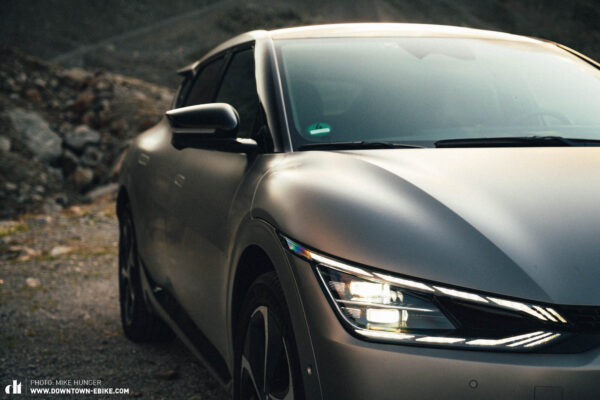
The interior of the KIA EV6 – It’s what’s on the inside that matters
The interior of the KIA EV6 is very tidy. It’s got a floating centre console, and the KIA drops the transmission tunnel you’ll find on combustion engine vehicles in favour of a ton of storage space. On the centre console, you’ll also find a range of storage trays, an ergonomic gear selector and the start button pointing right at the driver. There’s the optional inductive charging tray, too, though it made our smartphones get very hot. Below the centre console, KIA have also included a USB-A port for data transfer and a USB-C port for charging.
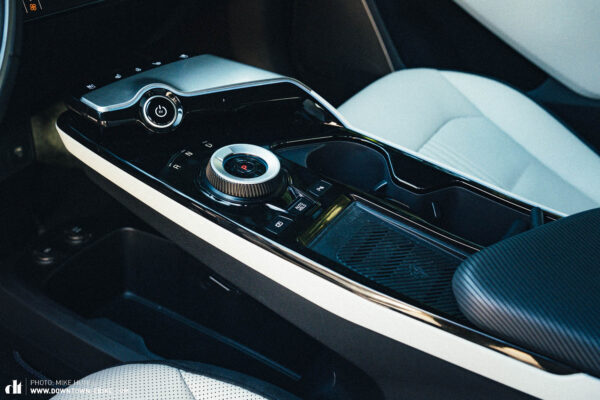
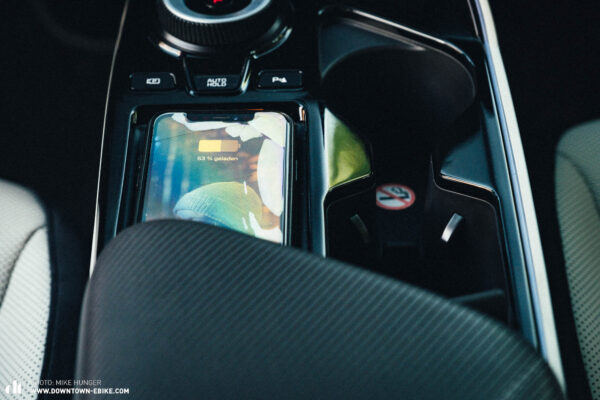
You’ll find 2 large displays pointing at the driver, one directly behind the steering wheel and one to the side of it, riddled with small icons that require a lot of practice to operate while driving. It’s best to leave it to the passenger to fiddle with the screen since it’s just not easy enough to read safely while driving. Important data like the state of charge, remaining range and current driving mode get displayed on the screen behind the steering wheel. The driving mode can be selected via a big rocker switch on the steering wheel, letting you choose from Eco, Normal, or Sport. These differ in the responsiveness of the accelerator and the behaviour of the steering – the suspension remains untouched.
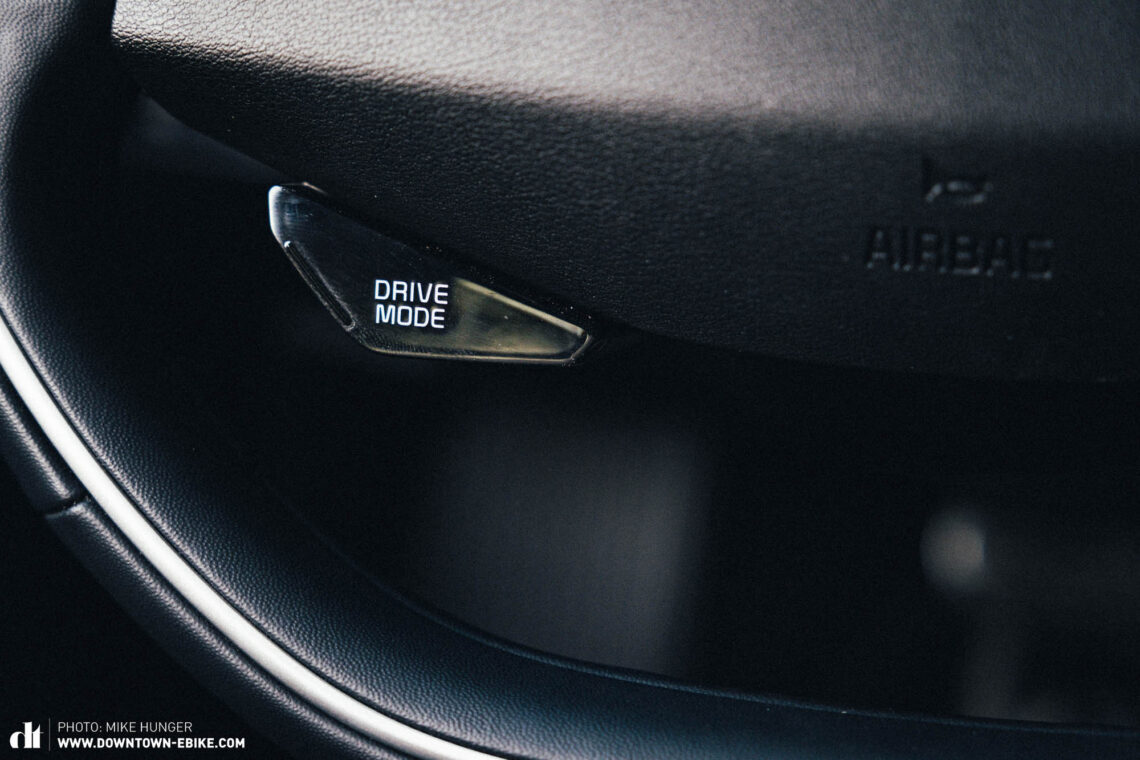
Besides the large display, you’ll also find two shifter paddles behind the steering wheel. Of course, EVs don’t have a multi-speed transmission, but you can change the level of regenerative braking when you let off the accelerator. There are six levels, letting you go from coasting freely all the way to one-pedal driving. With one-pedal driving, the level of regenerative braking is at its highest, so when you lift your foot off the accelerator, it’s like the brakes come on, recharging the batteries while bringing the car to a halt. Once you’re used to driving that way, it’s ideal for flowing along with inner city traffic. If you want to keep your eyes on the road at all times, we recommend going for the optional head-up display. Besides all the relevant driving data, it will also show you turning signals when you’re using the navigation system. You can also see whether the Adaptive Cruise Control has recognised and locked on to the vehicle ahead.
You might not get the same level of infotainment on the rear seats, but there’s plenty of room for your knees. Unfortunately, there isn’t enough space under the front seats to accommodate the rear passengers’ feet. The angle of the backrests of the rear seats can be adjusted, providing relaxed travel for at least 4 people. As an optional extra, you can have seat heating on the rear seats as well as climate control in the front seats, upping comfort even more.
If you want to make the most of the storage space, you can fold down the rear backrests, and you don’t have to be contortionist or run around the car three times to do so. The levers to fold down the backrests are positioned on the left and right of the trunk, putting them within easy reach. With the backrests folded down, the luggage capacity increases from 500 to a whopping 1.300 litres.
As a plus point for the vegans amongst us, there’s no sign of animal products on the KIA’s interior, as it relies on a lot of recycled materials and vegan pleather on the seats. This can generally be seen as commendable. However, both the materials and the finish feel a little cheap and artificial.
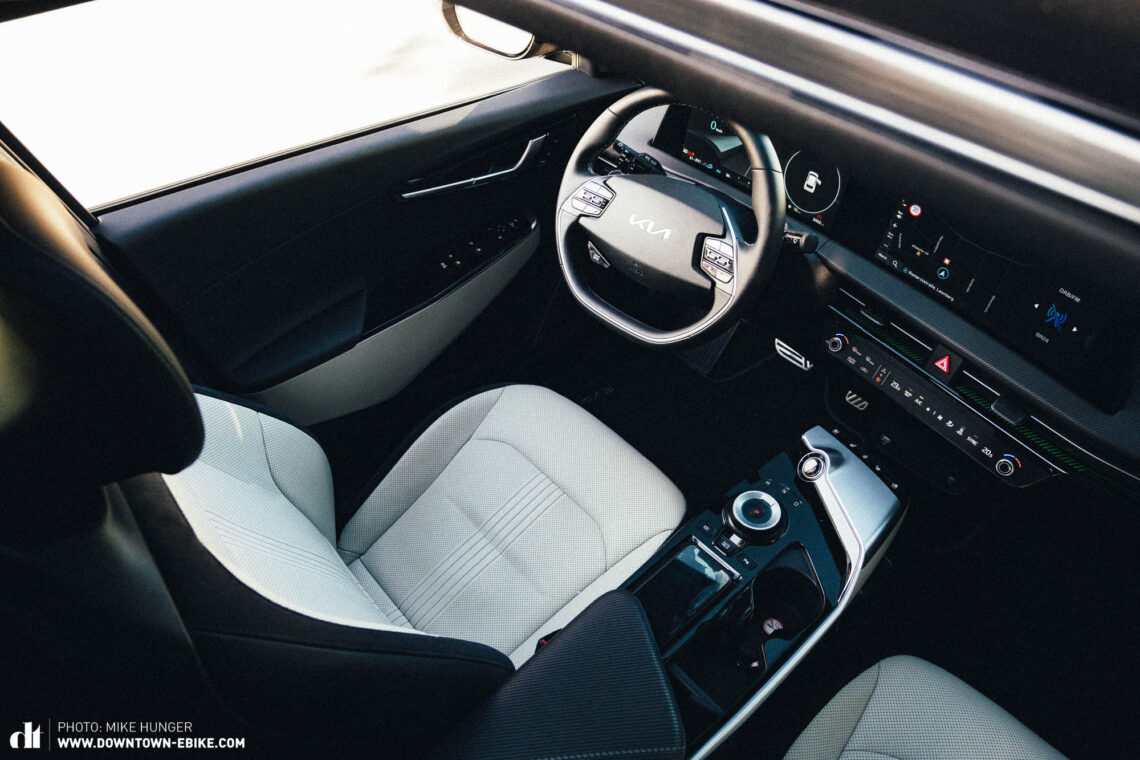
In contrast to the rear-wheel driven, two-wheel drive EV6, the all-wheel-drive model must make do with a 20 litre storage capacity in the frunk (front trunk). Those who opt for the standard two-wheel drive will be rewarded with a 52 litre frunk in the KIA EV6, which should be big enough for most of your groceries.
KIA EV6 GT-Line – Charging in record times, and a long range
The KIA EV6 is capable of having its 77.4 kWh battery recharged from 10 to 80% in just 18 minutes. That’s just enough for a short toilet break and a large cappuccino. According to the manufacturer, an 80% charge is enough for a WLTP range of 422 km, going all the way up to 528 km on a 100% charge. Naturally, these figures are much lower in day-to-day life, giving you a range of about 350 km on an 80% charge. After driving 2,180 km, the average consumption came in at approximately 23 kWh/100 km.
Sadly, the navigation system doesn’t do as well as some of the competition when it comes to including charging stops on the planned route. The KIA recognizes when your chosen destination is out of range, but it doesn’t suggest charging stops on your route or include the required charging time in the ETA. In that case, you’ll have to get active yourself, looking for an appropriate charging station manually and including it as a stop in the route – it’s a lot of extra effort and just not in keeping with the times.
The charging speed is on par with that of the Porsche Taycan, as it’s based on the same 800 V charging technology. That said, you can’t always expect to recharge in just 18 minutes since the effective charging time depends on a multitude of variables, including the charging station, outside temperature, pre-warming of the battery, and number of EVs currently using the charging station.
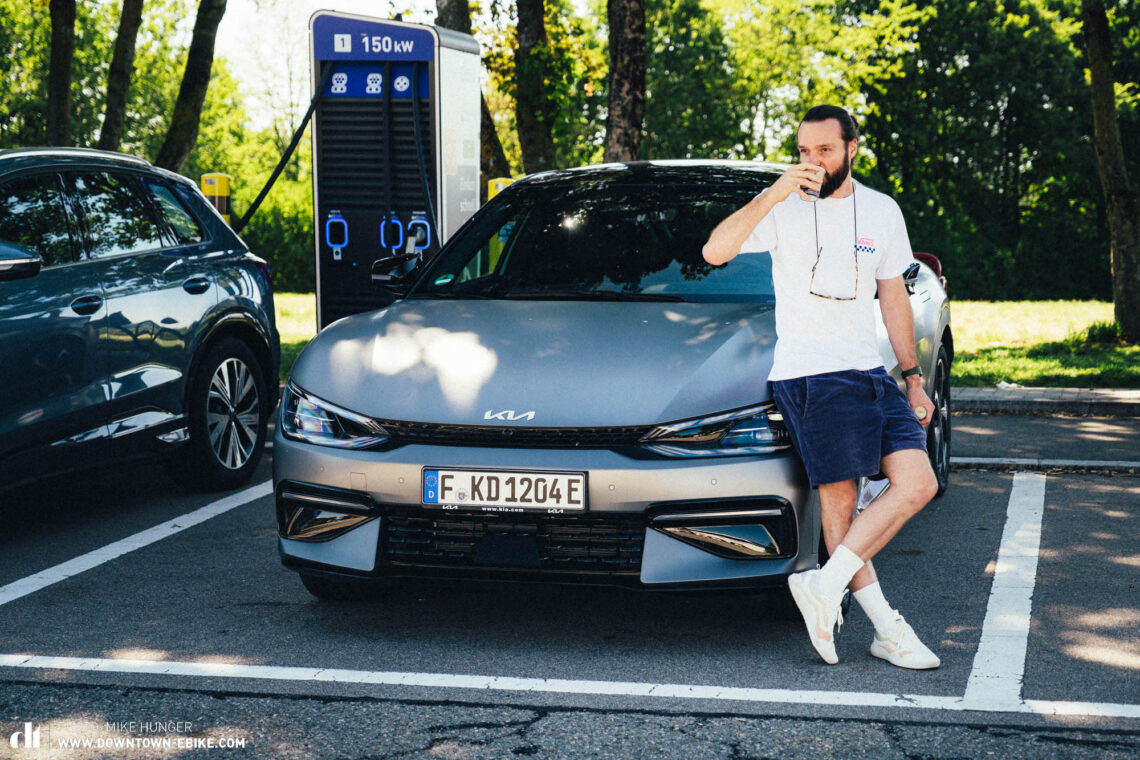
The KIA doesn’t just take a charge, it can also give it. Thanks to the Vehicle-to-Device (V2D) adapter, you can plug a standard household plug in the electric car’s huge internal battery. The Vehicle-to-Device feature provides a charging power of up to 3.6 kW and keeps charging until the vehicle’s battery is at just 20% capacity. That should be enough to get the KIA safely to the nearest charging station. It’s a very convenient feature, allowing you to use the KIA as a mobile power bank when you’re out camping, or to recharge your ebike between tours when you’re on holiday like we did. You could even use it to give another EV a charge when it’s got a flat battery.
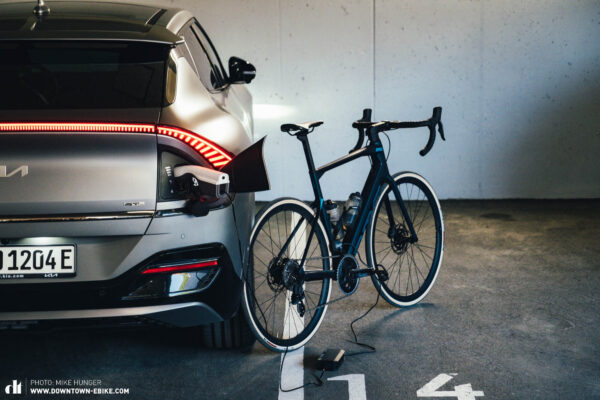

If you’re forced to charge at a slow charging station, you can always take a powernap with the electronic recliner function to recharge your own battery for the remainder of the journey. At the push of a button, the front seats recline as far as possible, providing a relatively comfortable position to catch a few z’s in.
The assist function of the KIA EV6 GT-Line – Ping-pong and late shifting
Our GT-Line test vehicle comes with all the bells and whistles regarding assist functions:
- Blind Spot Assist
- Park Assist (even remotely via the key)
- Lane Keep Assist
- Adaptive Cruise Control until the vehicle stops
- Lane Change Assist, the lot
With all these features it sounds like it could almost drive autonomously, but the integration and functionality of the systems still have a lot of room left for improvement. For example, with the Lane Keep Assist activated, the KIA likes to dock onto road markings on the left or right side of the lane, jumping to and fro like a ping-pong ball. Moreover, the Lane Keep Assist just switches itself off without warning as soon as there are no road markings it can orient itself by. So, despite the KIA’s partially autonomous driving, it still requires your full attention. Otherwise, things will get dangerous quickly.
The Lane Change Assist must be activated via the indicator, in which case it will change lanes as soon as traffic allows. However, you first must acknowledge the initial activation of the system via a pop up, which is easy to miss.
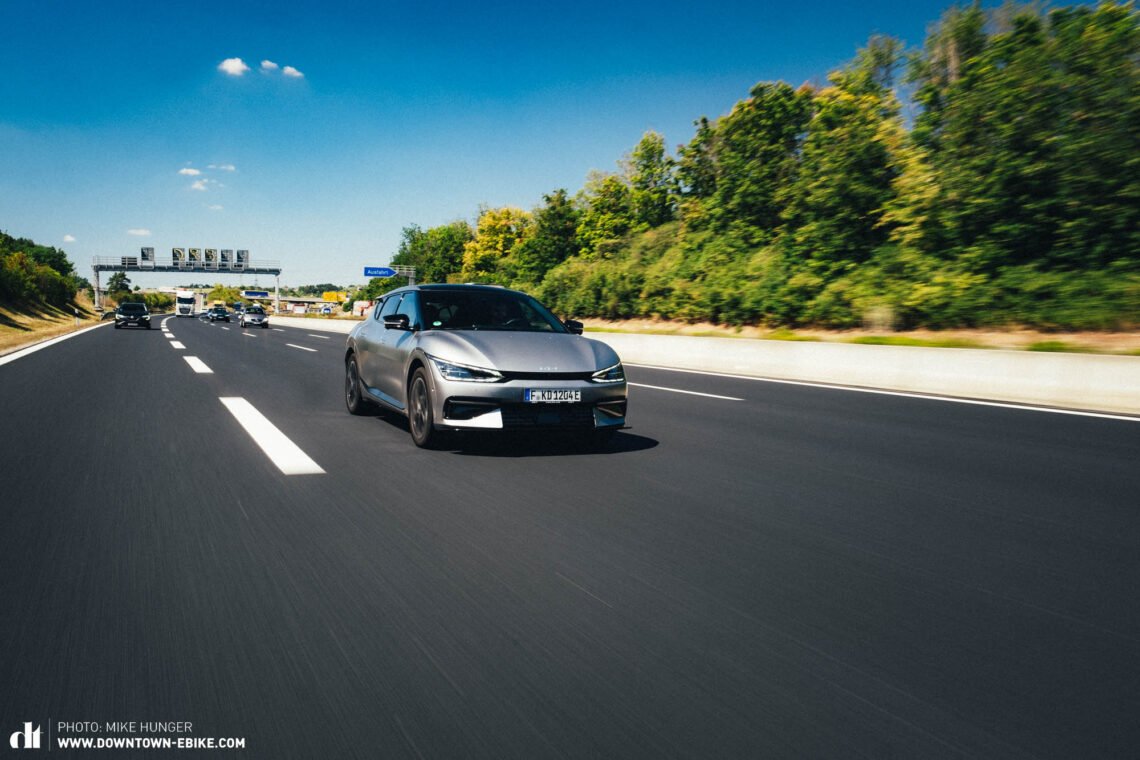
The Adaptive Cruise Control works reliably, recognising passenger vehicles as well as motorbikes and bicycles. As soon as the system recognises the vehicle ahead, the KIA will match its speed, accelerating and braking accordingly, coming to a complete stop if necessary. The Adaptive Cruise Control can also adjust its speed according to the speed limits on road signs. While the system can read road signs reliably, it’s a bit slow in doing so, or slow to react, which can get expensive: if there’s a speed trap right behind the road sign, the KIA might slow down too late – say cheese! As with many other vehicle brands, you can see once again that not all assist functions are equal. There’s still plenty of room for improvement left in this regard. Something of note is that the Adaptive Cruise Control will only follow the exact speed limit indicated on the road signs when activated – so if you live in one of the places, where the police will turn the blind eye as long as you follow the “nine you’re fine, ten you’re mine” unspoken rule, you won’t be able to set any allowance above the speed limit. As such, you’re bound to get impatient drivers following the flow of traffic on your bumper. Whatever the case might be, you should always obey the speed limit.
On the road with the KIA EV6 GT-Line
Pulling out of the driveway with the KIA, you’ve got to be careful. The G-forces generated by the 239 kW will push you back into the seat, and if you’ve set it to Sport mode it will unleash that power even if you push down lightly on the accelerator pedal. It takes just 7.3 seconds for the electric motors to get this 2-tonne SUV from 0 to 100 km/h. But it’s not just the driver and the passengers that get pushed back into the seats, the suspension also seems to buckle under the KIA’s accelerating forces – it feels almost like a speedboat with its nose pitching up when you push down the throttle, or the first 911 Turbo where all you can see is the sky when you’re at 5,500 revs. The suspension of the KIA EV6 GT-Line just can’t cope with the performance of its motors. It’s the same through fast corners, as the vehicle’s 2-tonne mass sits too far above the wheels, making the body roll from side to side. The feedback from the road feels vague. And the steering feels somehow disconnected, especially in Eco mode. Putting it in Normal or Sport mode makes the steering feel significantly more direct and responsive.

Together with the GT-Line package, the all-wheel-drive upgrade costs an additional € 13,900, providing a ton of traction. There’s a winter mode, too, which modulates the acceleration and braking very carefully so that the wheels don’t slide out. Still, the KIA makes the impression of a strong kid: it’s got a lot of power but lacks the dexterity to put it to good use. It just wasn’t that much fun to drive on winding mountain passes. The KIA EV6 is hindered by its weight and height. Driving in the city and looking for a parking spot, you’ll also notice its size. Navigating a multi-storey car park is the least fun of all.
That said, the KIA’s height and size make it very comfortable and relaxing to cruise along on the highway, which suits its vast range of added comforts, even though the assist functions need improving. While it can’t boast to be a dynamic sports car, it fares well as a powerful grand tourer. Its quick charging capabilities further underline this fact. All you need is to take a 15 minute break every two hours and you’re ready to hit the road, which is good practice on long drives anyway, helping you keep your wits about you. Furthermore, there’s easily enough luggage capacity and interior space to accommodate four people on vacation.
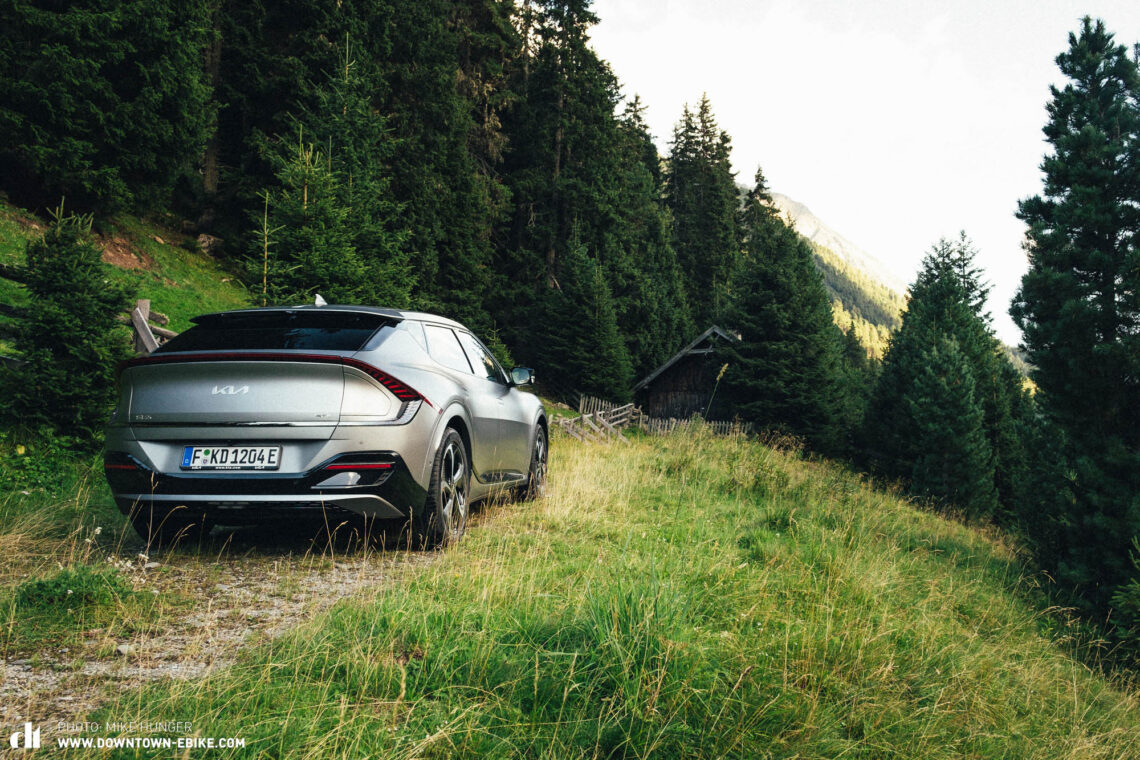
Our conclusion on the KIA EV6
The KIA EV6 SUV is a successful debut of the E-GMP platform and an exciting concept boasting impressive specs. There are a lot of things the brand have got right. Unfortunately, the assist functions and suspension are its downfall. The EV6, especially its suspension, can’t cope with its own performance, reserving the KIA for long hauls on country roads and the suburbs. It’s too bulky for the city, yet the front seats lack headroom with the optional sunroof installed. We love the striking, expressive and futuristic look, which turns heads without seeming snobby.

Tops
- good ergonomics of the centre console and controls
- light concept, shape, and design language
- 800 V fast charging technology
- mobile power bank thanks to the Vehicle-to-Device function
Flops
- slow reaction time of the Adaptive Cruise Control
- unintuitive menu
- cramped headroom with the sunroof
- Sport mode and soft suspension don’t mesh well
All tested e-cars: City Transformer Prototyp | Fiat 500e | Honda e | KIA EV6 | Opel Rocks E | Polestar 2 | Porsche Taycan | Smart EQ Forfour | Tesla Model 3 Dual Motor Long Range | VW ID.3 | VW ID.BUZZ
Words: Julian Schwede Photos: Mike Hunger



